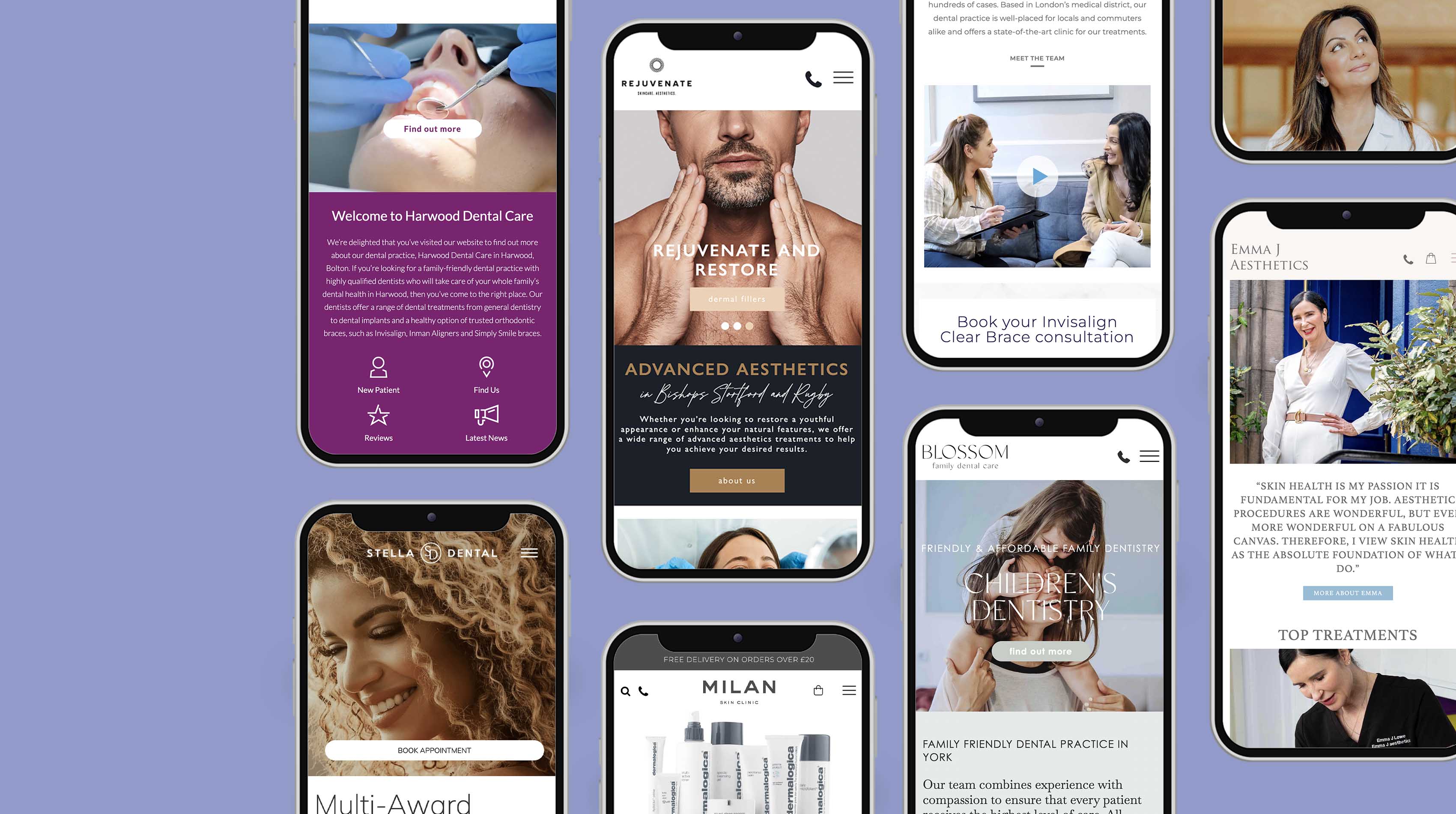Marketing consultant Adam Hampson discusses 10 common email marketing mistakes that can damage your campaigns and provides tips on how to avoid them
Once you’ve enticed people to sign up to your mailing list with an irresistible offer like an online skin assessment or skincare tutorial, your next challenge is to ensure that they open your emails.
Successful email marketing evolves through a process of research, testing, and analysis of the data provided by your email marketing software. Mailchimp, InfusionSoft, Mad Mimi, Constant Contact, Aweber, Campaign Monitor and others all provide excellent data about how your audience is interacting with the emails you send out.
If you make mistakes, they may lead to a decrease in interaction between you and your clients, including people opting out from your mailing list. To make sure this doesn’t happen, here’s my list of the top ten mistakes to avoid:
1. The wrong subject line
Get the subject line right and the number of people who open your email should soar – 33% of people open an email based on the subject line alone1 – but get it wrong and your audience may never get as far as reading your carefully crafted content; 69% of recipients will report an email as spam based on the subject line2.
The most common subject line mistakes include:
- Clickbait: Clickbait-style headlines have just one purpose, to get the reader to open or follow a link to a specific web page. The problem is that a title like ‘These 7 weird tricks will change your life forever’ usually opens to content that’s far from life changing.
In my experience, clickbait titles may result in higher open rates for first campaigns but, if the content consistently fails to live up to the promise of the subject line or if the subject line is misleading, recipients can begin to lose trust in a brand and opt out from future emails, meaning you no longer have permission to contact them.
- Being boring: Using a dull subject line will offer no incentive to open an email. Remember, recipients probably have an inbox full of weekly newsletters – why should they open yours?
A recent study into the best subject lines, by marketing automation company Mailchimp, found that people prefer short and descriptive subject lines – 50 characters or fewer – that give them a reason to click open.3
- Typos: A typo in your subject line can convey negative messages about your attention to detail and professionalism; proofread your subject line (and the email itself) before you hit send.
- Capitalisation: It can be tempting to capitalise your entire subject line so that it stands out from other emails in your recipients’ inboxes. However, online, capital letters are synonymous with shouting and no-one wants to be shouted at.
Capitalising one word in an email subject can be impactful, e.g. ‘We want to hear from YOU’, but there’s evidence to suggest that capitalised words can increase the chance of an email triggering spam filters4.
Takeaway
Carefully monitor your campaign open rates and experiment with subject titles. You should use A/B split testing5, which involves sending out the same campaign with slight variations in the subject line wording to segments of your mailing list to find out what type of titles most appeal to your recipients. You can then use the winning subject line to contact larger segments of your list.
2. Not targeted enough
Sending an email campaign to everyone on a mailing list rather than to a targeted segment is another common mistake. You may have people on your mailing list who aren’t clients yet and others who have been clients for years. Or some of your subscribers may only be interested in facial treatments, while others may want to know more about body sculpting. Different groups will be motivated by different content.
Takeaway
To boost your email campaigns, segment your list into different target groups; your email marketing software will have a segmentation feature. Alternatively, you could create different sign-up incentives to attract specific client-types to different mailing lists, e.g. a series of guides about skincare in your 30s, 40s and 50s, etc., aimed at getting people to sign up to age-segmented lists.
3. Personalisation mistakes
Various statistics show the benefits of personalising marketing emails.6 Data from Experian found that brands that use personalised subject lines experience 27% higher unique click rates (i.e. the number of individuals who click on a link in an email one or more time across all of their devices) and 11% higher click-to-open rates (i.e. the number of unique clicks on links in an email divided by the number of unique opens), and more than double the amount of revenue gained per email compared with non-personalised mailings.7
Personalised emails are open to mistakes, especially when they are auto-generated through email marketing software. The most common faux pas is an email addressed to ‘Hello *¦FULLNAME¦*’. When people receive this, it drives home that personalisation is just an illusion.
Takeaway
If you do use personalisation elements in your email campaigns, send yourself a test email to check that everything is working properly. Often the above problem occurs when a person hasn’t given their name when signing up to a mailing list. Most email marketing tools have a ‘merge tag’ feature where you can tell them to use the first name where available but begin an email with a generic greeting if a name is missing.8
4. Sent from ‘noreply’
Just because it’s common practice to send email marketing campaigns from a ‘noreply’ address doesn’t mean it’s best practice. Using a ‘noreply’ address can send the message that you’re not interested in having a conversation with people on your mailing list beyond what you want to promote to them.9
Takeaway
If you currently send your emails from an address such as ‘noreply@yourdomain.com’, try changing it to your name or something like ‘hello@yourdomain.com’ and invite people to give you feedback. It’s a subtle way of showing that you value what your recipients have to say.
5. Minimal value
Another common email marketing mistake is to focus solely on selling rather than providing value. People sign up to mailing lists when they feel there is something to gain from doing so. I recommend that at least 80% of your emails focus on building a client relationship rather than securing a sale – you might do this by sharing blog articles, advice, links to resources, case studies or treatment photos.
Takeaway
Offer your mailing list content that reflects why they’re interested in aesthetic treatments, even if they never go on to buy from you. They might not become a client but they could become a brand ambassador by telling others about your clinic.
6. No personality
You can be professional in your marketing emails without being aloof or unfriendly. When people receive an email, they want to feel that it comes to them as an individual from an individual and that they share common ground with the sender.
Takeaway
Don’t be afraid of showing your team at work, showcasing the equipment you use or talking about your passion for new techniques – people will love seeing the human faces of your business and the enthusiasm you have for the specialty.
7. Ignoring the pre-header
The pre-header is the short line of text that sits at the very top of a marketing email. It often says something generic like: ‘Having trouble viewing this email? Click here’.
What many businesses forget is that, if people have the ‘message preview’ feature in their inbox switched on or they’re viewing their emails on a smartphone, the pre-header is displayed below the subject line before they even open the email. This is a perfect piece of on-screen real estate to put a marketing message or call to action to entice people to open the email.
Takeaway
Changing the pre-header message to a marketing message will increase the chances of achieving higher open rates – Jon Powell from Marketing Experiments found that this resulted in a 104% increase in open rate10.
Pre-headers work best when they tie in with the subject line – for example, teaming “How to get skin like a superstar” with a pre-header such as “Don’t miss this time limited offer – 20% off your next Hydrafacial if you book by Friday”.
8. No call to action or too many
A call to action tells recipients what action you would like them to take after reading your email.
Do you want them to click through to your website? Sign up to a new service? Send in their comments and reviews or perhaps book an appointment? To you, the call to action might be obvious, but your readers will only know what steps to take next if you tell them.
Takeaway
Always give your email campaigns a clear call to action such as button or link saying ‘Read the full story here’, ‘Make me a VIP’ or ‘Book your next appointment’ that takes them through to your website.11
9. Too many emails or not enough
How many marketing emails should you send? The ideal number will depend on your content and your target audience, as well as what you can commit to within your budget. Ask yourself “What value will my subscribers gain from receiving this email?” before you send out a new communication.
Takeaway
Keep an eye on those all-important metrics; one indicator that you’re sending out too many emails is a sharp decrease in open rates or a spike in unsubscribe rates.
10. Not checking
Before you send out an email to your list, send yourself a test copy. Do all the links in the email work and lead to the right places? Are there any spelling or grammatical mistakes? Does the email have a clear message throughout? Have you included a subject title? Make sure you double-check everything before you hit ‘Send’.
Takeaway
Small details make a big impression. For example, it’s important to include links to your website or a landing page to generate web traffic and enquiries.
Conclusion
Email marketing mistakes are bound to happen. The important thing to do is to monitor your open and click-through rates and play around with different options, to determine what works best for your business and database. The key is to show your clients that they matter and you care about the content you send out.
REFERENCES
1. 2. Hubspot, 19 eye-opening subject line stats that will supercharge your email open rates, <https://blog.hubspot.com/sales/powerful-subject-line-stats-that-will-supercharge-your-open-rates>, updated 26th September 2017
3. Mailchimp, Best Practices for Email Subject Lines, <https://kb.mailchimp.com/campaigns/previews-and-tests/best-practices-for-email-subject-lines>, 23rd August 2017
4. Spam support by Calco UK, Why do my emails go missing?, <http://www.calcouk.com/help/all_caps_spam.html>, viewed October 2017
5. Optimizely, What is Split Testing?, <https://www.optimizely.com/split-testing/>, viewed September 2017
6. Campaign Monitor, 70 Email Marketing Stats Every Marketer Should Know, <https://blog.hubspot.com/blog/tabid/6307/bid/33971/9-undeniable-advantages-of-using-personalized-content-in-your-marketing.aspx>, 6th January 2016
7. Experian, New insight from Experian Marketing Services helps brands prepare for the holiday season, <https://www.experianplc.com/media/news/2016/q2-2016-email-benchmark-report/>, August 2016
8. Mailchimp, FNAME merge tag trick, <https://blog.mailchimp.com/fname-merge-tag-trick/>, December 2008
9. Aweber, “Do not reply” address? No, thank you!, <https://blog.aweber.com/articles-tips/do-not-reply-address-dont-bother.htm>, viewed September 2017
10. Marketing Experiments, Email Pre-headers Tested: The Surprising Sensitivity of a Single Line of Text, < https://marketingexperiments.com/email-marketing/preheaders-tested>, 8th January 2015
11. Campaign Monitor, 75 Calls to Action to Use in Your Email Marketing Campaigns, <https://www.campaignmonitor.com/blog/email-marketing/2016/03/75-call-to-actions-to-use-in-email-marketing-campaigns/>, August 2016









